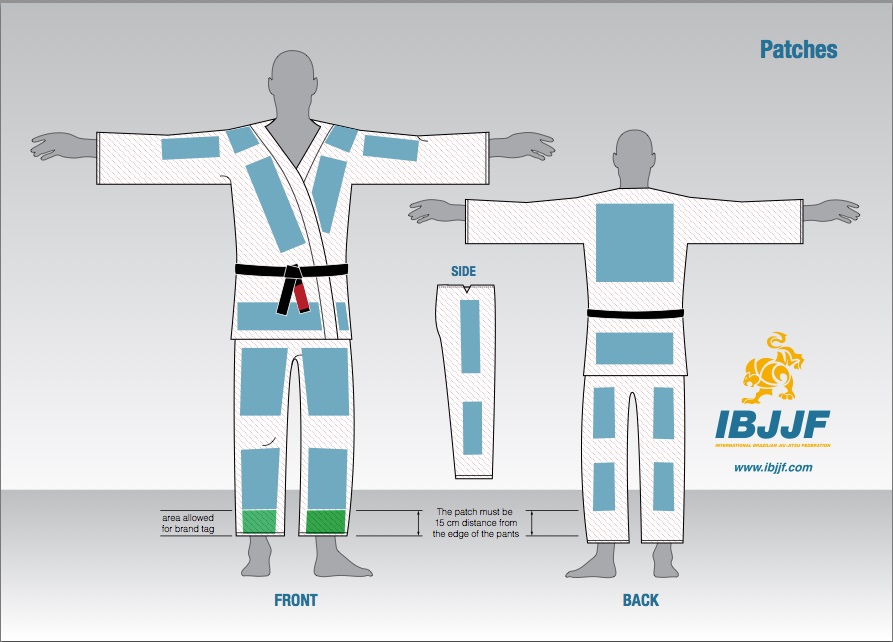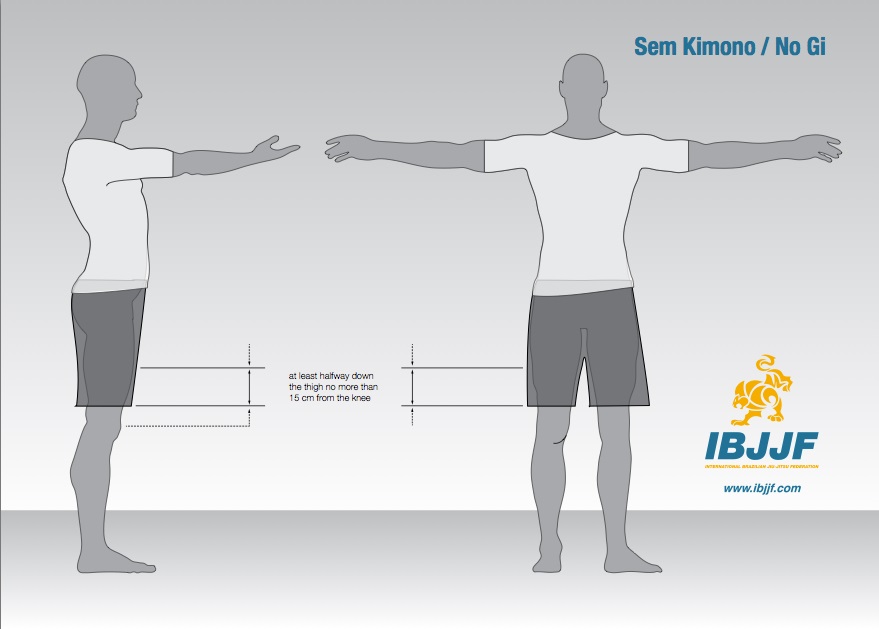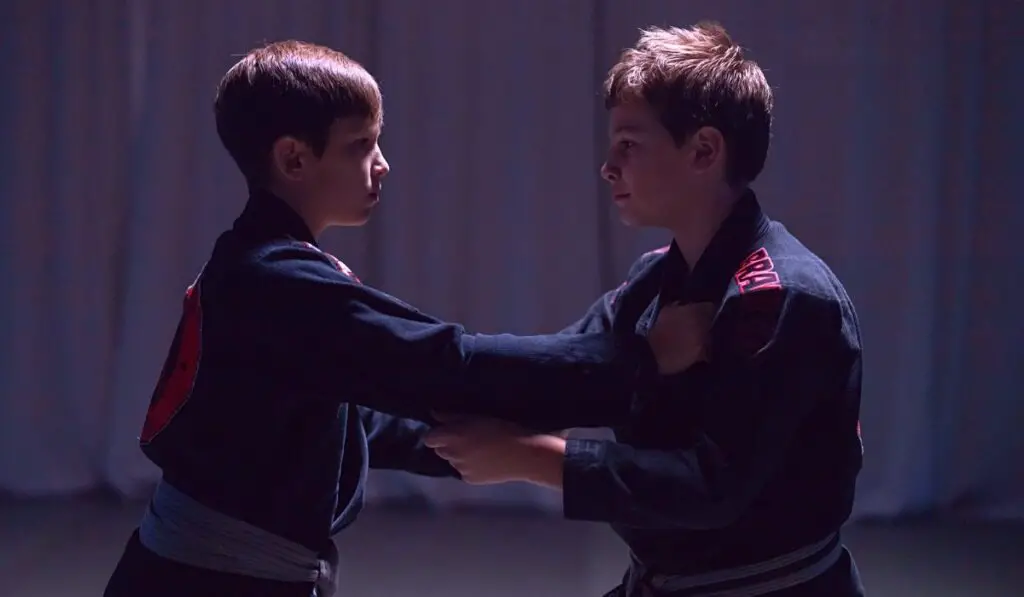The IBJJF is a top organization for BJJ competitions, including the Jiu-Jitsu Worlds. They have strict rules to ensure safety and fairness, including uniform requirements for Gi and No-Gi competitions.
If you plan to compete, it’s crucial to understand these rules to comply on tournament day. This tutorial covers all the essential information to help you focus on your skills and talents!
IBJJF Gi Uniform Rules

The IBJJF and other tournament organizations have rigorous rules for the GIS uniforms competitors wear during the competition.
These regulations protect the safety and fairness of all players. Let’s go over the IBJJF Gi uniform criteria.
IBJJF Gi Sizes Requirements
The IBJJF requires that the Gi Size must meet particular standards.
For example, when an athlete’s arm is stretched straight parallel to the ground, the Gi top should reach the thigh, and the sleeves should be no more than 5 cm from the wrist. Likewise, the pants should not get over 5 cm over the ankle bone.
Furthermore, the Gi’s lapel thickness must be 1.3 cm, the collar width must be 5 cm, and the sleeve opening at full extension must be 7 cm.
Gi Material Criteria
The IBJJF requires that Brazilian Jiu-Jitsu Gis be made of cotton cloth thick enough and easy for an opponent to grasp.
In addition, Gis in the juvenile, adult, master, and senior categories must be constructed of woven cloth.
Allowed Gi Colors
The IBJJF accepts white, blue, and black GIs. However, wearing a Gi jacket and trousers in different colors is unacceptable, and wearing a Gi with a collar different from the top is intolerable.
Indeed, Gis with a collar with a different color than the top is also not allowed.
Also, painted GIs are prohibited unless the paint is in the shape of an academy or sponsor emblem – and only on areas of the GI where patches are authorized.
IBJJF Gi Patches Criteria
Patches may only be worn in some regions of the GI, as illustrated in the following image. They should be made of cotton and correctly seamed.
However, the GI inspectors will remove any unsealed patches or patches in prohibited areas of the GI.

IBJJF Belt Requirements
Athletes should wear a durable belt that reflects the competitor’s BJJ ranks with a 4 to 5-cm width.
Moreover, the colored belts should have a black bar, whereas black belts should have a white or red tip.
The belt should be worn over the top, wrapped twice around the waist, and secured in a double knot that is tight enough to keep the GI top closed.
Otherwise, after being knotted in a double knot, each end of the belt should dangle 20 to 30 cm.
Related: To succeed, you need to know the IBJJF belt requirements and graduation system. This will help you set realistic goals and work your way up the ranks of this grappling art. Click here to learn more!
IBJJF No-Gi Uniform Rules

The IBJJF and other no-gi jiu-jitsu tournament bodies need specific features for competitive uniforms. Some of the no-gi requirements are as follows.
Rash Guards Requirements
BJJ competitors of both genders must wear a rashguard shirt, which should be long enough to cover the torso to the waistband of the shorts.
Otherwise, this rashguard can be in black, white, or black and white, with at least 10% of the rank color belts to which the athlete belongs.
Related: Xmartial manufactures high-quality rash guards with anti-slip gel to guarantee longevity and a perfect fit. Click here to discover why BJJ practitioners adore Xmartial rashguards.
Men Shorts Requirements
Male competitors must wear black, white, black, and whiteboard BJJ shorts or shorts in the same color as the athlete’s belt rank.
Otherwise, the short uniform should be free of pockets, buttons, exposed drawstrings, zippers, or any plastic or metal that might injure the opponent. It must be halfway down the leg and no longer than the knee.

Women’s Shorts and Compression
Females’ shorts and trousers compression must be black, white, black and white, or the color of the competitor’s belt rank.
Moreover, shorts must not have pockets, buttons, zippers, or any plastic or metal that might injure the opponent.
They must also be long enough to reach halfway down the thigh but no longer than the knee.
Related: IBJJF Illegal and Legal Submission Techniques
Conclusion
IBJJF uniform guidelines are critical for ensuring fairness, professionalism, and safety in Brazilian Jiu-Jitsu contests.
These guidelines establish a level playing field by requiring the same uniform for all competitors, preventing any athlete from gaining an unfair advantage. They also contribute to a sense of order and professionalism at competitions.
Athletes should follow these guidelines to create a pleasant competitive experience for everyone involved.
Recommended: Most takedowns are brutal, putting a lot of strain on the knees. As a result, practitioners must carry reliable knee pads to protect their joints and avoid injury. Click here to learn more!


